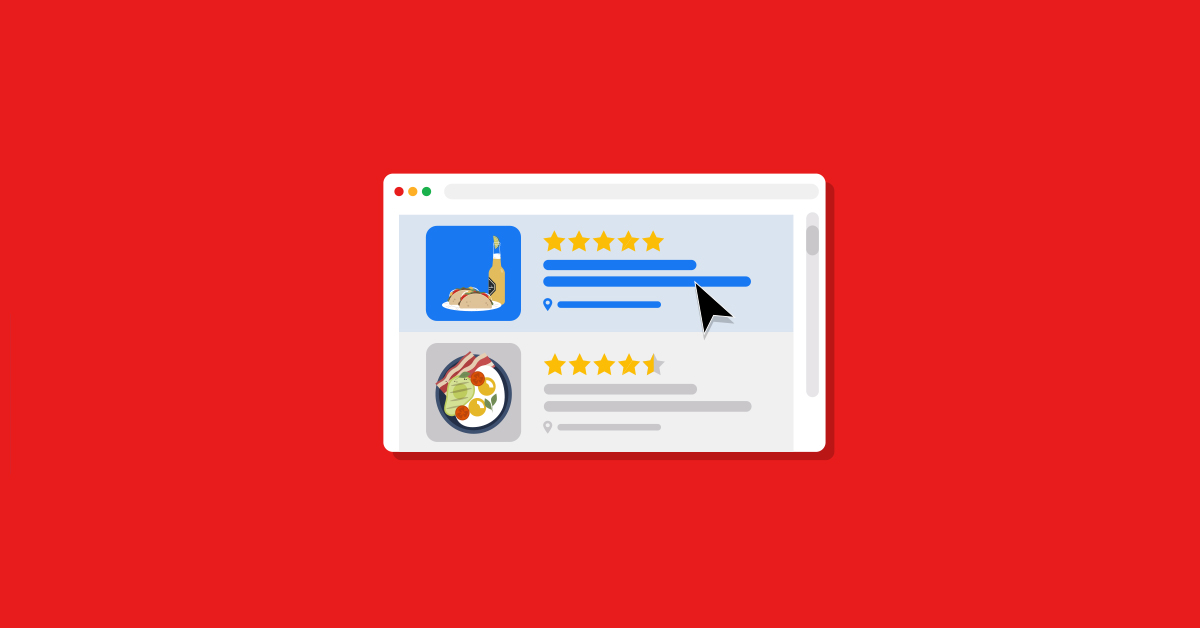
Hospitality staff are the backbone of the industry, and your team is one of your most valuable assets. While your employees are the key to making your venue tick, rostering too many staff (or not enough) can spell disaster for your business.
Staff rostering has evolved into a fine art – balancing wages, shift timings, staff personality clashes, annual leave, sick days, busy periods, and lulls can be a delicate balancing act for business owners.
With this in mind, we’ve taken a deep dive into the ins and outs of staff rostering, so you don’t have to. We spoke with hospitality owners and researched industry trends to understand how to build a cost-effective roster.
Let’s dive in.
What is staff rostering & why is it so important?
Before we get to the good stuff, it’s first important to understand exactly what staff rostering is and why it’s so important for hospitality businesses.
With labour costs accounting for around 30% of a hospitality business’s revenue and venues dealing with increasingly thin margins, having as much control over your labour costs as possible is crucial. Therefore, understanding how many team members are needed each day, who your best staff are and when to roster them is instrumental in keeping wage costs low and profits high.
Staff rostering is much more than simply jotting down the times your employees need to work each week and sharing these details with your team. Over the years, staff rostering has transformed from simple schedule planning to a sophisticated, revenue-driving business function – thanks to the wealth of insights business owners now have on their staff and overall operations.
What is a staff rostering system?
A staff rostering system is a program or software that allows businesses to schedule staff, map the cost of rosters, track individual performance, notify staff of their upcoming shifts and allow employees to swap shifts. Most rostering systems also integrate with POS software and accounting systems to provide a holistic approach to staff management.
Examples of staff rostering systems:
13 tips for building a cost-effective staff roster
- Roster roles, not individuals
- Cost the roster while you write it
- Plan ahead and give staff notice
- Stagger your roster
- Know your team
- Put your best staff on the busiest shifts
- Share the good shifts
- Provide flexibility to employees
- Give staff two days off
- Start the roster week on a busy day
- Make the roster accessible to staff
- Create protocols for time off requests
- Use a staff rostering system
Need some more guidance with your staffing issues?
Our guide to hospitality recruitment covers every step of building your dream team. From recruitment to training to retaining your staff, we've got you covered.
1. Roster roles, not individuals
The first step to ensuring you have the correct number of people for each shift is to create your roster based on the exact roles you’ll need for a particular shift. Building a roster around roles rather than individuals makes it easier to cost out your schedule, so you remain within budget for wages each week.
For example, on a busy Saturday night, you might need three bartenders, seven waitstaff, two supervisors and five kitchen staff. Whereas on a quiet Tuesday, you may only need one bartender, three waitstaff, one supervisor and four kitchen staff.
Once you know the exact roles you’ll need for each shift (and how much that’s going to cost you), it’s easy to build a roster around individual requests, such as annual leave and rest days.

2. Cost the roster while you write it
Understanding your budget, and sticking to it, is crucial when creating a cost-effective roster. Employee wages are one of the highest costs for hospitality businesses, alongside rent and inventory, yet it’s the cost that businesses have the most control over.
Therefore, costing your roster as it’s written is the best way to keep on top of your wage costs, stick to budget and allow for accurate forecasting. If you know you’re in for a busy night, then you can schedule more staff to ensure tables are turned quickly.
Kurtis Bosley, a veteran of Sydney’s hospitality scene and owner of Corretto, uses insights from his POS to create cost-effective rosters.
“We used Insights to understand when we had dollars coming in and how we could create a more informed roster of when we actually needed people based on when the money was coming through,” explains Kurtis.
3. Plan ahead and give staff notice
The pandemic has shifted the way we work, and there’s been a cultural shift where people are starting to prioritise a healthy work-life balance.
Planning your roster as far in advance as possible gives your staff enough time to plan their social lives. Respecting the fact that your team have lives outside of work will go a long way in fostering a mutually respectful relationship, and employees are more likely to be loyal and give their all.
A veteran cafe owner, who has worked in the hospitality industry for over 15 years, explains how he wanted to offer his staff the stability of regular hours by creating a set schedule for his team that rarely changed.
“In previous jobs, I always saw people getting frustrated that they could never plan anything less than a week in advance because they hadn’t gotten their roster yet. So I gave everybody the same roster each week, and they could plan their lives.”
The hospitality industry can be unpredictable, and there will always be times when you’ll need staff to work a few extra hours or swap their shifts. But by offering your team a certain level of structure when it comes to their shift pattern, you’re emphasising that you respect their time and acknowledge that their personal schedules are also important.
4. Stagger your roster
A staggered roster is often the first choice for hospitality businesses as it accounts for fluctuations in customer foot traffic throughout the day.
With this type of roster, shift start times are staggered, shift lengths may differ to ensure there are enough staff to cover busy periods, and a skeleton staff will operate during quieter times.
For example, in a bar with a popular happy hour from 5 pm – 7 pm, three team members start their shift at 2 pm and end at 9 pm, and another four team members will begin their shifts from 4 pm until 11 pm. This ensures the bar has maximum staff coverage during happy hour and less staff rostered during quieter times.

5. Know your team
Getting to know your team and the personalities within it will help you better understand the team dynamics. In a perfect world, everyone would get along and work in harmony – however, this isn’t always the reality – especially in a fast-paced industry like hospitality.
If there’s a conflict between certain team members, then this can impact productivity and have a knock-on effect on the wider team. Similarly, some team members might be the best of friends and work productively together, whereas others might distract one another.
Understanding the intricacies of your team will help you plan a roster where, when possible, staff members who bring out the best in each other and work effectively and efficiently together can be placed on the same shift.
6. Put your best staff on the busiest shifts
If you have shifts that are notoriously busier than others, make sure your best and most experienced staff are working.
Top performing, experienced staff will be able to turn tables quickly and upsell menu items to get the maximum revenue out of each table without disrupting or slowing down service.
You can use your POS data with your roster and wages to understand if it’s profitable for certain staff to work on certain days.
Kurtis Bosley, owner of Corretto, used his business insights to understand if it was profitable for casual staff to work on a Sunday by comparing their Sunday surcharge against staff wages.
“We’ve got a Sunday surcharge, and it’s so interesting to see the data,” comments Kurtis.
“On a busy Sunday, we’ll pull a report, as casual staff are expensive on a Sunday – it’s nice to see if the surcharge is making a difference or if you need to cut back hours because you’re not making any money because it’s costing too much to operate – it’s invaluable.”
7. Share the good shifts
Working in hospitality is amazing, but it can also be exhausting. Early starts, late nights, and busy days where you’re rushed off your feet can be tiring – especially when you’re doing it for multiple days in a row.
Therefore, a good roster should be fair and share the best shifts equally between employees. In turn, if the best shifts are shared equally, the unpopular ones should be too. When everyone is rostered fairly, the burden is shared, and staff are less likely to be disgruntled or call out favouritism.

8. Provide flexibility to employees
In the wake of the pandemic, employees have come to expect flexibility from their employers.
While it’s essential to consider the needs of your business, having a flexible approach to annual leave requests, shift swapping, and rest days are crucial for building trust with your employees. If you’re willing to be flexible with these requests, staff are much more likely to be accommodating when you need them to cover a shift or work later than planned.
If you lack flexibility, you risk staff unnecessarily calling in sick or finding a job elsewhere – both of which are detrimental to your bottom line.
9. Give staff two days off
Regular time off is instrumental in fostering a happy and productive work environment. In a seven-day work week, staff should be rostered two days off and, ideally, these days should be consecutive.
However, this isn’t always possible in a fast-paced hospitality business, and there will be times when your staff will need to pull double shifts or work for more than five days in a row. While overtime is sometimes unavoidable, it’s vital to ensure that it’s an exception rather than the rule.
Staff working overtime regularly is also detrimental to your budget, with wages increasing by at least 150%. If you find your team are often working more hours than they’re normally rostered, you may need to hire more staff to cope with the extra workload.
10. Start the roster week on a busy day
While the typical week runs from Monday to Sunday, it doesn’t necessarily make sense for your roster to follow the same pattern – as this system flows from your quietest day to your busiest.
For hospitality businesses, starting your roster on the busiest day of the week can be more productive as you’re more likely to be fully staffed during your peak times. Typically, staff are less likely to call in sick at the start of a working week, and if you need to cut down on hours later in the week to keep within budget, you’ll be doing so on quieter days.

11. Make the roster accessible to staff
The roster should be readily available for staff as soon as it’s confirmed. Creating an online roster in a shared space like Google Sheets or through a staff rostering system is a great way to keep staff in the loop.
An email or text can then be sent to the team with a link to the roster so everyone is on the same page. It’s also important to send out the upcoming roster a couple of weeks in advance to give staff enough notice to plan, know when their days off are or swap shifts.
You should also have a clear and open communication channel for staff to swap shifts – this could be something as simple as a WhatsApp group or a board in the back office where shift requests can be shared.
12. Create protocols for time off requests
Create a clear and easy-to-follow protocol for time off requests, such as annual and sick leave.
For example, if you create your rota three weeks in advance, your protocol for requesting annual leave should take this into account, and employees should give a minimum of four weeks’ notice for any annual leave requests.
As we mentioned earlier, flexibility is the name of the game, so it’s important to try and accommodate annual leave requests if they’re late notice and only for a day or two. However, if an employee requests an extended period of annual leave – a week or longer – they should adhere to the four-week notice rule, so you can adequately plan the roster.
When it comes to sick leave, employees should give you as much notice as possible before their shift is due to start so that you can arrange appropriate cover.
13. Use a staff rostering system
Employing a staff rostering system is a great way to streamline your employee management and create cost-effective rosters.
Staff rostering systems make rostering a breeze for businesses.
- Create sales-driven rosters
- Find the right staff for the right shift by comparing job roles, skills, and wages
- Instantly share new rosters with staff via email or SMS
- Track staff hours and measure performance
- Assign tasks to team members and get notified when they’re complete
- Staff can swap shifts within the system
- Integrates with POS and payroll providers
The importance of effective staff rostering
Not enough staff working during peak times, too many on quiet days or inexperienced staff on your busiest nights can impact the wider team, customers and your bottom line.
To mitigate these risks, it’s essential to have a robust staff rostering process in place to make sure you keep your staff costs as low as possible while also ensuring your team has a fair and balanced schedule.
Plus, if you enlist the help of a staff rostering system, you’ll save time building rosters, be able to track employee performance and provide staff with an easy-to-use shift swapping tool.
Need some more guidance with your staffing issues?
Our guide to hospitality recruitment covers every step of building your dream team. From recruitment to training to retaining your staff, we've got you covered.

News you care about. Tips you can use.
Everything your business needs to grow, delivered straight to your inbox.


